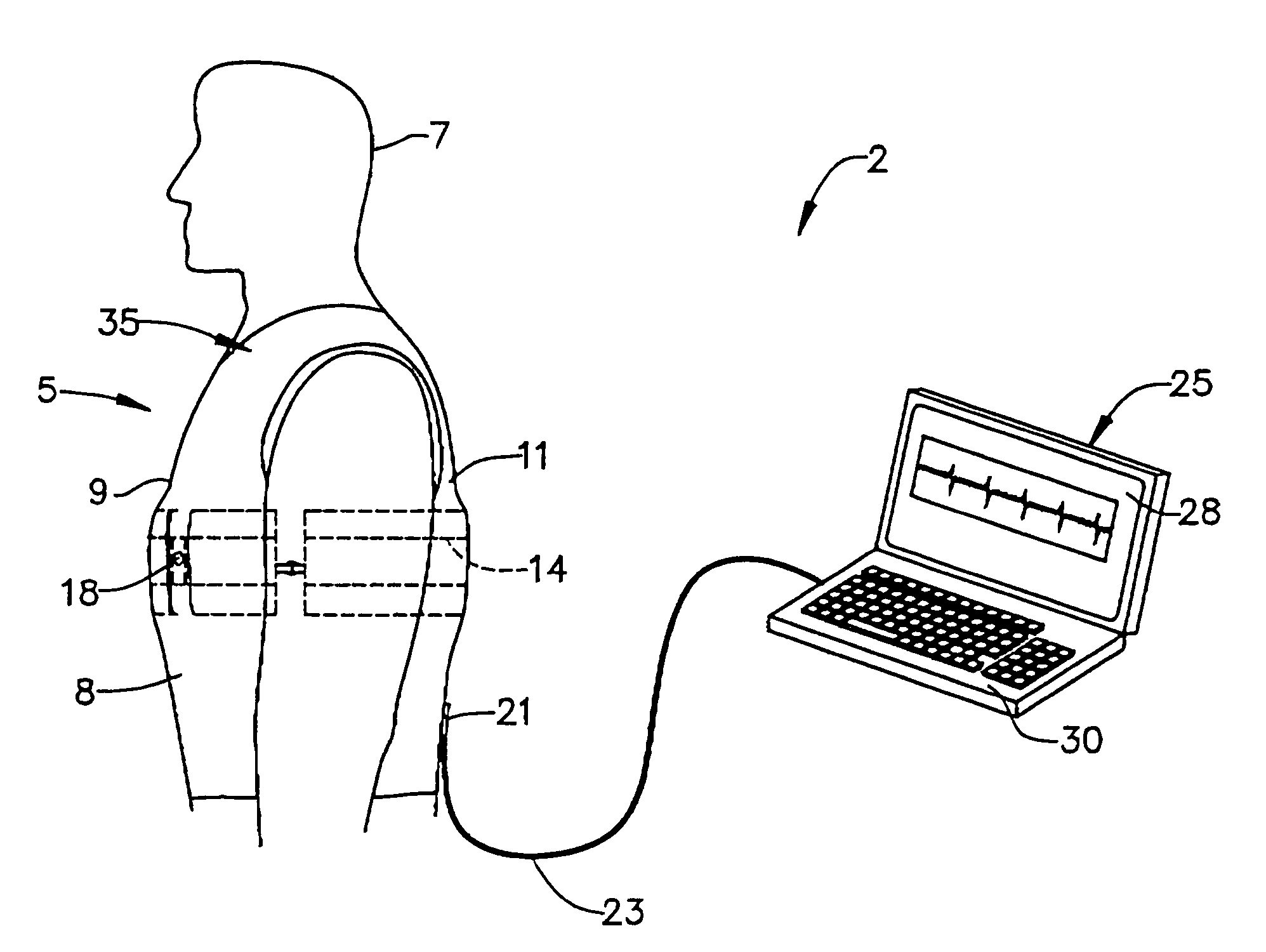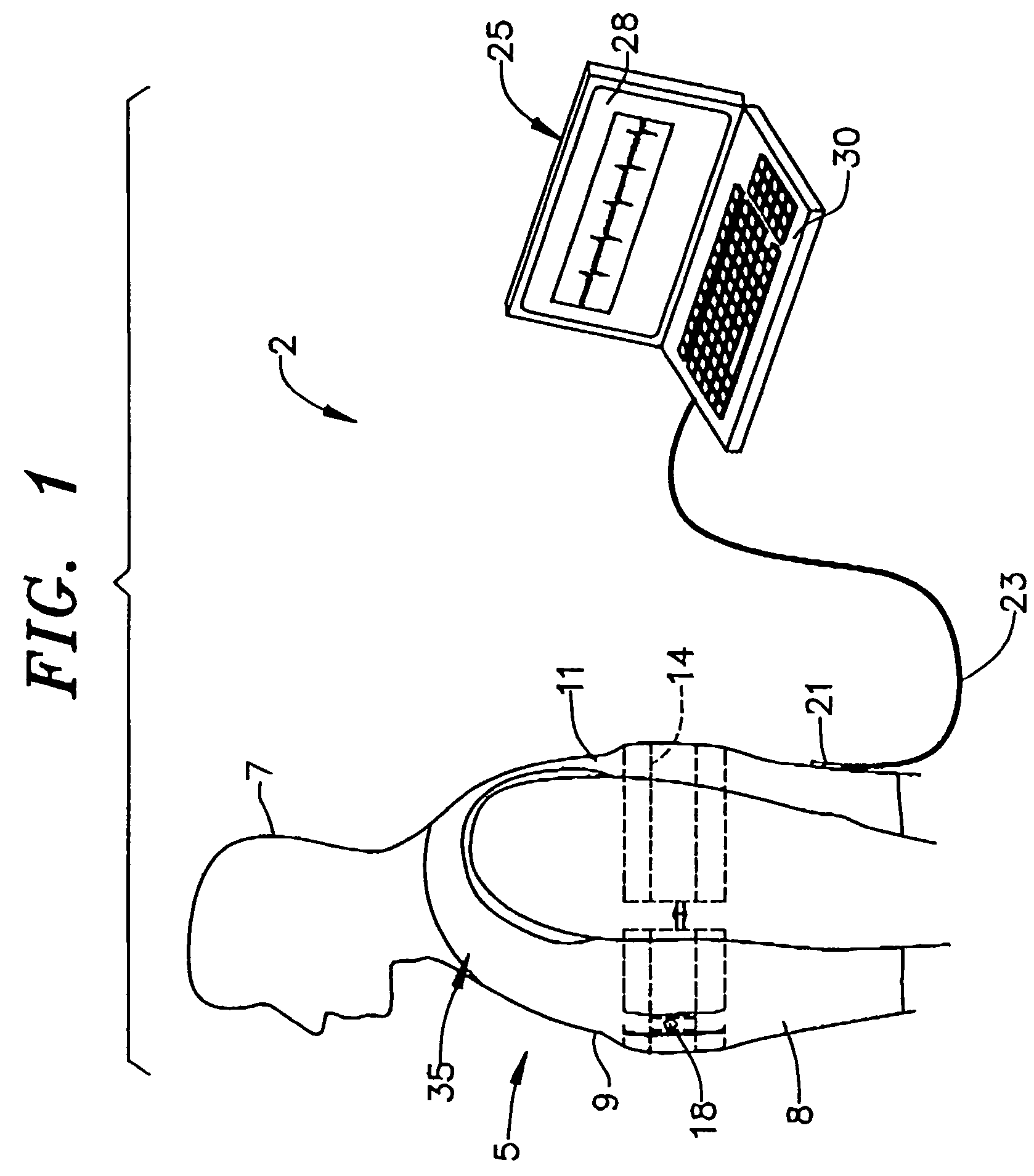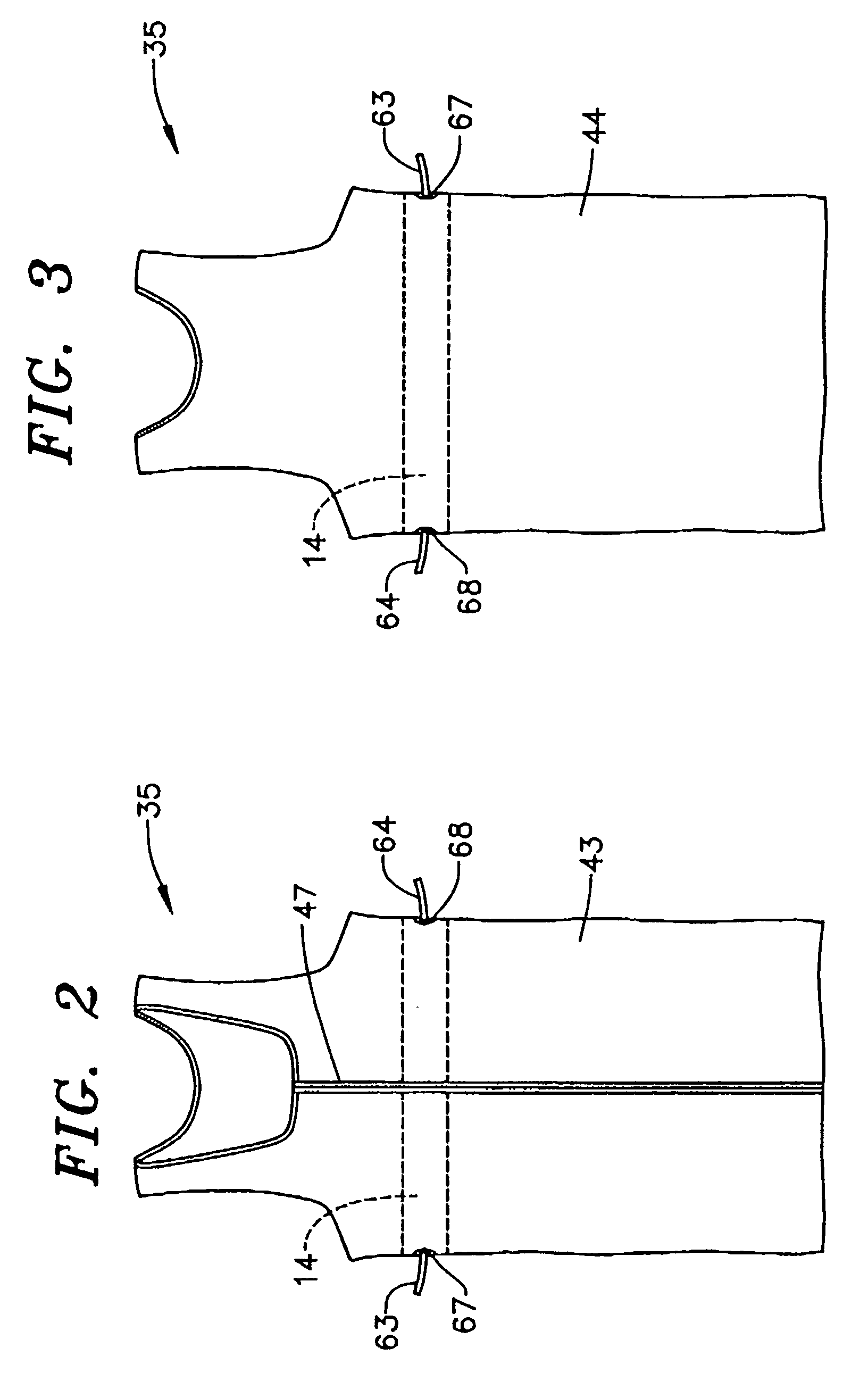Garment incorporating embedded physiological sensors
a physiological sensor and adjustable technology, applied in the field of physiological sensor embedded garments, can solve the problems of difficult establishing good electrical contact, affecting the quality of resistive coupling over time, and requiring conducting gels and/or adhesives
- Summary
- Abstract
- Description
- Claims
- Application Information
AI Technical Summary
Benefits of technology
Problems solved by technology
Method used
Image
Examples
Embodiment Construction
[0027]With initial reference to FIG. 1, a sensor system constructed in accordance with the present invention is generally indicated at 2. In general, sensor system 2 functions to measure biopotentials of an individual 5, such as a medical patient, animal, test subject or the like. As shown, individual 5 includes a head 7 and a torso 8 having a chest 9 and back 11, with torso 8 being surrounded by a holding device which forms part of sensor system 2. In the embodiment shown, the holding device constitutes a band 14. More specifically, sensor system 2 includes band 14 having embedded or otherwise integrated therein at least first and second sensors 17 and 18. In accordance with the invention, at least first sensor 17 constitutes a capacitive-type sensor and, in the most preferred embodiment of the invention, both first and second sensors 17 and 18 constitute capacitive-type sensors.
[0028]As shown, each of first and second sensors 17 and 18 is preferably hardwired to a connector 21 and...
PUM
 Login to View More
Login to View More Abstract
Description
Claims
Application Information
 Login to View More
Login to View More - R&D
- Intellectual Property
- Life Sciences
- Materials
- Tech Scout
- Unparalleled Data Quality
- Higher Quality Content
- 60% Fewer Hallucinations
Browse by: Latest US Patents, China's latest patents, Technical Efficacy Thesaurus, Application Domain, Technology Topic, Popular Technical Reports.
© 2025 PatSnap. All rights reserved.Legal|Privacy policy|Modern Slavery Act Transparency Statement|Sitemap|About US| Contact US: help@patsnap.com



